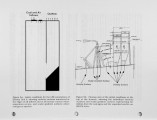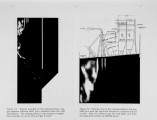| OCR Text |
Show the effectiveness of various gas injection and mixing schemes over a wide range of load conditions for any individual furnace. However this requires accurate and reliable methods for simulating the complex turbulent mixing and chemical reaction processes associated with reburn gas injection and chemistry. Traditional turbulent reacting flow models face well-known difficulties in achieving such reliable predictions. These difficulties result from the modeling required in any time-averaged representation of the turbulent transport and mixing-chemistry coupling processes. All traditional codes are based on such time-averaging of the governing equations, which leads to turbulent transport terms that must be modeled. Despite more than sixty years of intensive research in turbulent flows, there remains to date no alternative to this averaged modeling beyond that originally suggested by Boussinesq in 1877. namely with diffusion-like representations of the turbulent transport terms. All currently available turbulence modeling codes are based on this approximation. The various models available differ only in their visual appearance, and in the comparatively minor issue of how they choose to represent the resulting fictitious turbulent (or eddy) diffusivity in the diffusion-like approximation. However basic research over the past two decades has clearly established that it is the underlying diffusion-like representation at the core of all these models that is fundamentally incorrect. This diffusion-like representation of turbulence ignores what is now recognized to be the dominant role of large-scale structures in the entrainment and mixing processes in turbulent flows. These large-scale eddies cannot be modeled by any diffusion-like representation, and for this reason turbulence modeling is largely moving away from the traditional time-averaged approach. At the same time, the emergence of inexpensive yet powerful desktop workstation computers has eliminated much of the original need for modeling turbulent combustion with the traditional time-averaged approach. As a consequence, a new class of turbulence models based on "large eddy simulations" are beginning to appear, which allow time-dependent computations of the large-scale structures that are key to the entrainment and mixing processes, and thereby entirely avoid any diffusion-like representation of these scales. The Local Integral Moment (LIM) model is based on these large-eddy simulation concepts, and can be applied to numerically simulate the turbulent mixing and chemical reaction processes involved in gas reburning applications. Unlike the traditional approach to turbulence modeling. LIM simulations involve no time-averaging, and instead are based on a Lagrangian front-tracking method in which the time-evolution of flow, mixing, and detailed chemistry are computed directly. A detailed summary of the LIM model was presented at the 1996 AFRC International Symposium (Suresh, D a h m & Tryggvason 1996) and at the 1996 International Gas Research Conference (Dahm & Tryggvason 1996). Since LIM simulations are fundamentally different from traditional turbulent flow and combustion models. these earlier papers are essential to understanding many of the results to be presented here. Briefly, in the LIM model [Tryggvason & Dahm 1990; Chang, Dahm & Tryggvason 1991; Suresh. D a h m & Tryggvason 1994; Suresh, D a h m & Tryggvason 1996; Dahm. Tryggvason & Zhuang 1996; D a h m & Tryggvason 1996], the molecular mixing and |




























